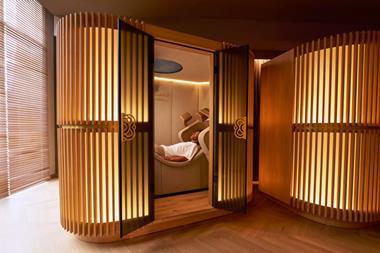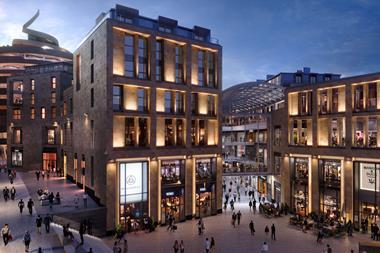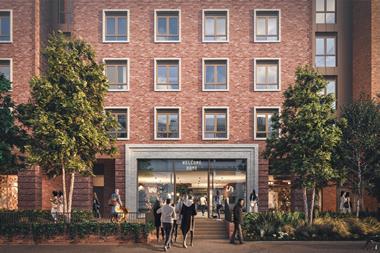TOP TOWNS RANKING 3
Key Facts
Total floorspace: 2.3 million sq ft (211,430 sq m)
Missing retailers in central Birmingham: Past Times, John Lewis, Laura Ashley, Soletrader, Lakeland, Bravissimo
Top five under-sized retailers in central Birmingham: Primark (-17,456 sq ft), Tesco Metro (-10,143 sq ft), Sainsbury’s Local (-10,133 sq ft), Bhs (-9,524 sq ft), Somerfield (9,030 sq ft)
Top five centres that share the central Birmingham total catchment: Merry Hill (9 per cent), Walsall (6 per cent), Solihull (5 per cent), Wolverhampton (4 per cent), Sutton Coldfield (3 per cent)
Area of highest rental growth over the past five years: Bullring (1.7 per cent)
Average rental growth over the past five years: 0.3 per cent
New developments: the 236,615 sq ft (21,980 sq m) Edgbaston Galleries scheme is set for completion in January 2010. Martineau Galleries, due to open the year after, will measure 700,000 sq ft (65,030 sq m)
Footfall index: January 2006: 100, July 2007: 100
Source: Experian/rental data from Churston Heard
Four years after Birmingham’s Bullring shopping centre opened its doors, Britain’s second biggest city is still suffering from the fall-out. While there are only a few empty units in the city, there are several sites “on the market”, according to Rowley Hughes Thompson partner Ian Hughes.
“Rental values are flat and in some places have probably declined,” he says. “In Corporation Street, Zone A rents were once at£250, but now they are more like£150. Part of that is because retail has had a tough time in the past six months and retailers have become a lot more rent- and cost-conscious.”
Birmingham suffers from oversupply of prime space and that is affecting lettings in New Street, warns Hughes. “There are an awful lot of£200 to£250 Zone A units, but there is a real lack of shops in£75 to£150 Zone A,” he says. “Some units that were historically A1 in New Street have gone to A2. For instance, high street bank RBS has taken a unit that was once occupied by a high-fashion retailer. There has been a lot of redistribution.”
The Bullring itself is performing well, with footfall thought to be up by about 10 per cent over the past 18 months. The centre has pulled in several new retailers to the city, including Armani Xchange and DKNY, both of which have taken space in the former Nike site. Storm Watches, Links of London and Bestseller have also taken stores.
The former BT unit has been carved up into three sites. New Look has taken 40,000 sq ft (3,715 sq m) and Mothercare and JJB Sports have taken the remaining space. The New Look outlet will trade alongside the fashion retailer’s Bullring store, but it is unclear what will happen to the brand’s site in the Pallasades.
Some schemes, such as Martineau Galleries at Priory Square, which includes nearly 1 million sq ft (92,900 sq m) of retail space, are targeting premium retailers. The Pavilions development recently signed LK Bennett and Molton Brown and is hoping to build a critical mass of similar bridge-level fashion retailers. Hughes says: “What Birmingham doesn’t have is a Met Quarter like Liverpool. The shopping is more fragmented. There are little clusters of these types of retailers all over the place.”
Jones Lang LaSalle national retail director Nick de-Pons forecasts that Martineau Galleries will lift trade in New Street when it opens. “With the Bullring one side and Martineau Galleries on the other, it will be great for the street,” he says.
However, Experian director of property consultancy Jonathan De Mello warns that the scheme might just draw shoppers from other locations in the city. “It won’t do much for Birmingham’s catchment, but will cannibalise the rest of the city,” he says.
The Mailbox continues to attract wealthy shoppers, but is generally quiet. Several retailers are thought to be on turnover-linked leases, making The Mailbox a viable option.
A question mark hangs over the Pallasades centre, which forms part of the proposed redevelopment of Birmingham New Street train station. The shopping centre is likely to get a makeover as part of the overhaul of the station, but funding has not yet been secured.
“The retail market is quite hard and business will remain fairly tough,” concludes de-Pons. “But there are some decent requirements and fair opportunities out there and the Bullring is likely to remain the first port of call. There are lots of new entrants around.”
Demographics
Population 5.9 million
Total retail spend£21.99 billion
Weighted shopper population 664,423
Index of population with internet access 91
Cars per household 1.02
Annual gross household income£26,852
Most over-represented occupation Process plant and machine operatives
Most over-represented age band 15-24
Source: Experian


























No comments yet